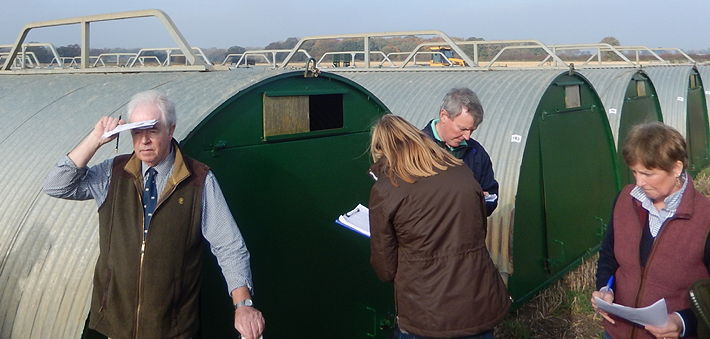Little movement as far as the SPP is concerned which eased fractionally by 0.02p to stand at 200.37p, but still just above the 200p threshold at a time when producers still need a much better return than this to stay in business.
On the other side of the Channel, EU pig meat prices have also remained largely unchanged with the latest influential German producer price quoted at 1.90 EUR, which works out at an estimated 165p/kg and underlines the fact that much cheaper imported pig meat is still continuing to undercut the domestic market.
However, UK weekly contribution prices have become even further adrift from the SPP and news that Woodheads’ weekly price of 1.90p had been reduced to 185p went down like a lead balloon with pig producers.
Spot bacon prices were also nothing to write home about with most buyers already full of contract pigs, although further indications are continuing to emerge that numbers will start to tighten as the end of the year approaches which may bring an element of Christmas cheer to what has otherwise been a fairly gloomy picture, with non-contract bids reported between 180p – 190p/kg.
Cull Sows
Looking ahead, one good sign for the pig industry is that cull sow prices have gone up by a significant 5p/kg.
As a result, cull sow exporters have lifted their bids to between 71p and 75p/kg, but in many cases producers who have already been forced to cull their herds this price rise has come too late.
Unfortunately, however, over the past seven days the Euro has fallen from 87.54p to 86.90p which does not help cull sow export values.
Weaners
Weaner buyers are continuing to show a little more interest in filling empty pens than previously but still remain cautious, but at least they are nibbling. Interest in weaners is also being rekindled following significant falls in the price of feed ingredients.
Feed Market Trends
Better news for pig producers following on from reports that the existing Ukraine grain corridor will be extended for a minimum of four months, which will allow cereals and proteins to be exported and by increasing availability pig producers should benefit from lower feed prices in the months ahead, but as with many aspects of life in Ukraine grain trading remains extremely volatile.
UK ex-farm spot feed wheat has averaged £241.50/t over the past seven days, however twelve months ago the ex farm price stood at an estimated £216/t so there is still a long way to go before pig producers can breathe more easily.
Futures prices have also confirmed sharp drops in values with feed wheat for December delivery at £263/t and for September 2023 at £250/t. Feed barley values remain more manageable with December worth £243/t and for September next year at £234/t.
Protein prices have also eased in sympathy with December – January 2023 delivered Hipro soya at £484/t and May – October 2023 painting a much happier picture as far at £441/t. Rapemeal buyers for longer months are agreeing deals in the £371/t region which certainly makes better reading than rapemeal values a few weeks earlier.
And finally…
More evidence continues to emerge over the ongoing decline in UK pig availability with figures published by DEFRA confirming a drop of 18% in the UK breeding herd figures in June.
However, cash strapped pig producers cannot continue to endure the roller coaster of prices seen in recent of years, which continue to threaten the whole pig meat supply chain, parts of which are already fractured beyond repair.




